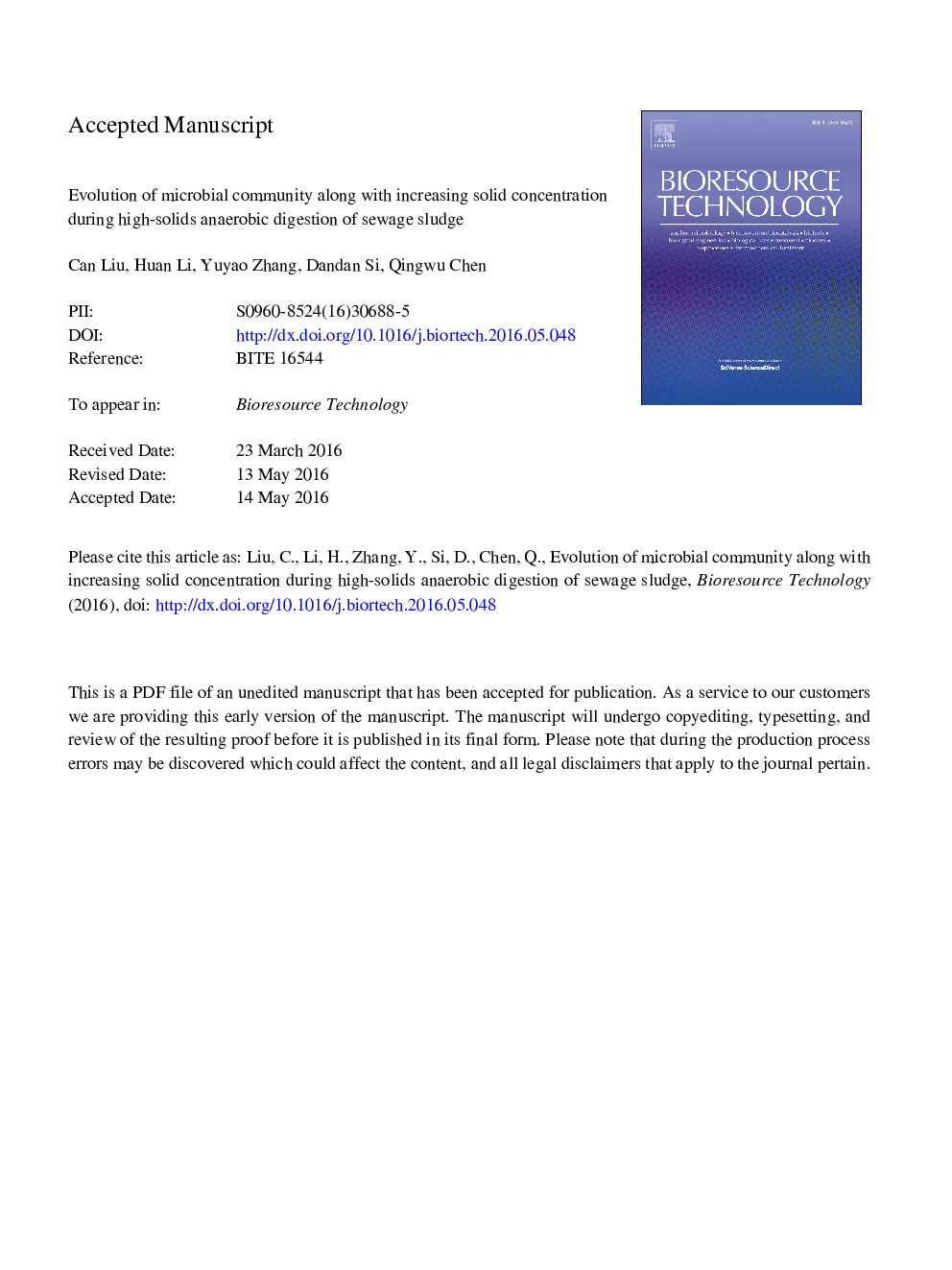| Article ID | Journal | Published Year | Pages | File Type |
|---|---|---|---|---|
| 7070565 | Bioresource Technology | 2016 | 37 Pages |
Abstract
High-solids anaerobic digestion (HSAD), a promising method with smaller reactor and less heating energy consumption, showed relatively lower digestion efficiency sometimes and higher tolerance to some inhibitors. To investigate the phenomena, the archaeal and bacterial communities in four anaerobic digesters treating sewage sludge with total solids (TS) of 10-19% were investigated. Although acetoclastic methanogenesis conducted mainly by genus Methanosarcina was still the main pathway producing methane, the total ratio of acetoclastic methanogens decreased along with the increased TS. In contrary, the relative abundance of hydrogenotrophic methanogens increased from 6.8% at TS 10% to 22.3% at TS 19%, and methylotrophic methanogens from 10.4% to 20.9%. The bacterial community was dominated by five phyla. Acidogenic and acetogenic bacteria affiliated to Firmicutes decreased following the increase of TS; while the proteolysis phylum Bacteroidetes increased, with a tolerant family ST-12K33 notably existing in the digesters at TS 17% and 19%.
Related Topics
Physical Sciences and Engineering
Chemical Engineering
Process Chemistry and Technology
Authors
Can Liu, Huan Li, Yuyao Zhang, Dandan Si, Qingwu Chen,
